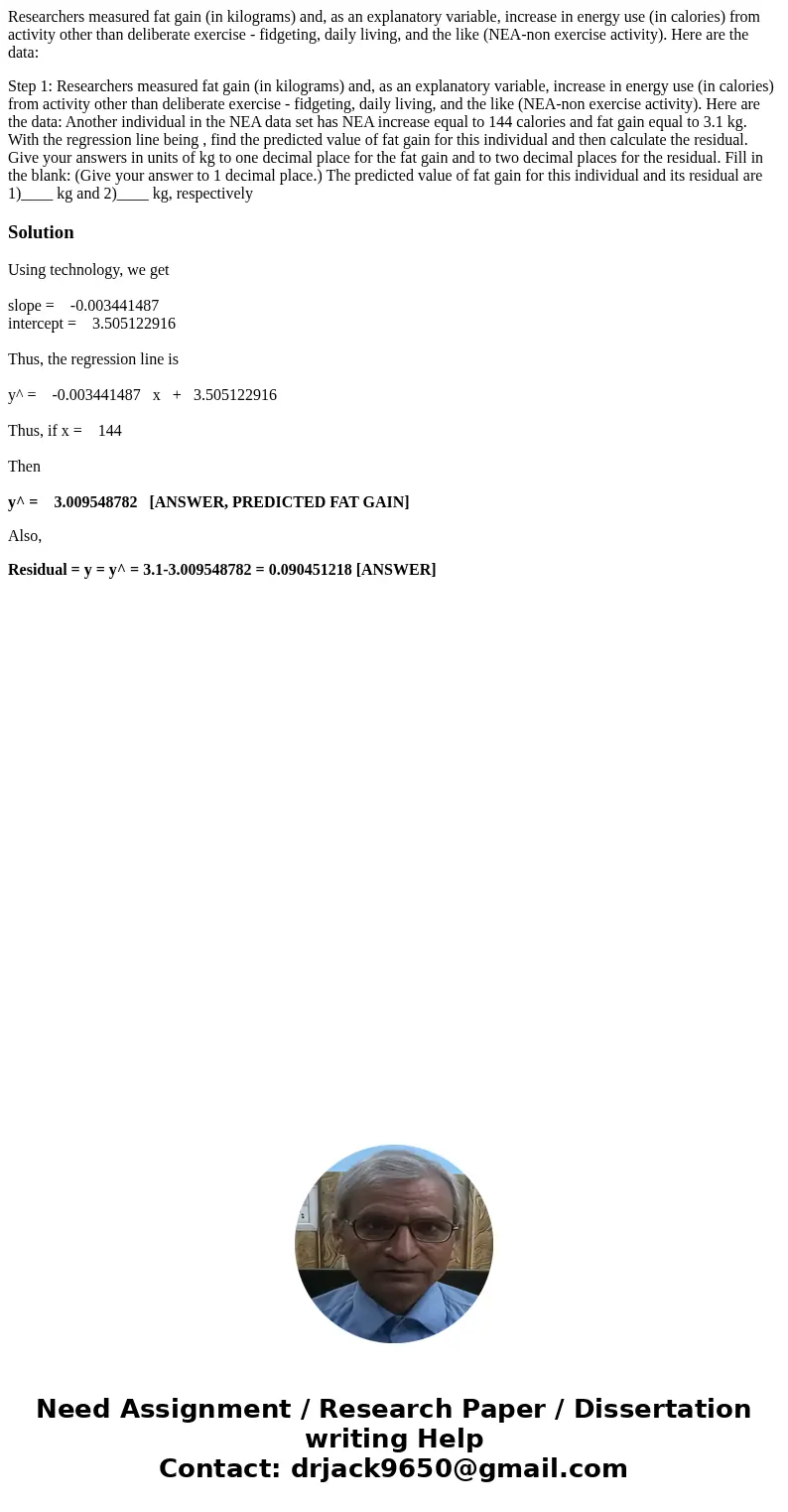Researchers measured fat gain in kilograms and as an explana
Researchers measured fat gain (in kilograms) and, as an explanatory variable, increase in energy use (in calories) from activity other than deliberate exercise - fidgeting, daily living, and the like (NEA-non exercise activity). Here are the data:
Step 1: Researchers measured fat gain (in kilograms) and, as an explanatory variable, increase in energy use (in calories) from activity other than deliberate exercise - fidgeting, daily living, and the like (NEA-non exercise activity). Here are the data: Another individual in the NEA data set has NEA increase equal to 144 calories and fat gain equal to 3.1 kg. With the regression line being , find the predicted value of fat gain for this individual and then calculate the residual. Give your answers in units of kg to one decimal place for the fat gain and to two decimal places for the residual. Fill in the blank: (Give your answer to 1 decimal place.) The predicted value of fat gain for this individual and its residual are 1)____ kg and 2)____ kg, respectively
Solution
Using technology, we get
slope = -0.003441487
intercept = 3.505122916
Thus, the regression line is
y^ = -0.003441487 x + 3.505122916
Thus, if x = 144
Then
y^ = 3.009548782 [ANSWER, PREDICTED FAT GAIN]
Also,
Residual = y = y^ = 3.1-3.009548782 = 0.090451218 [ANSWER]

 Homework Sourse
Homework Sourse